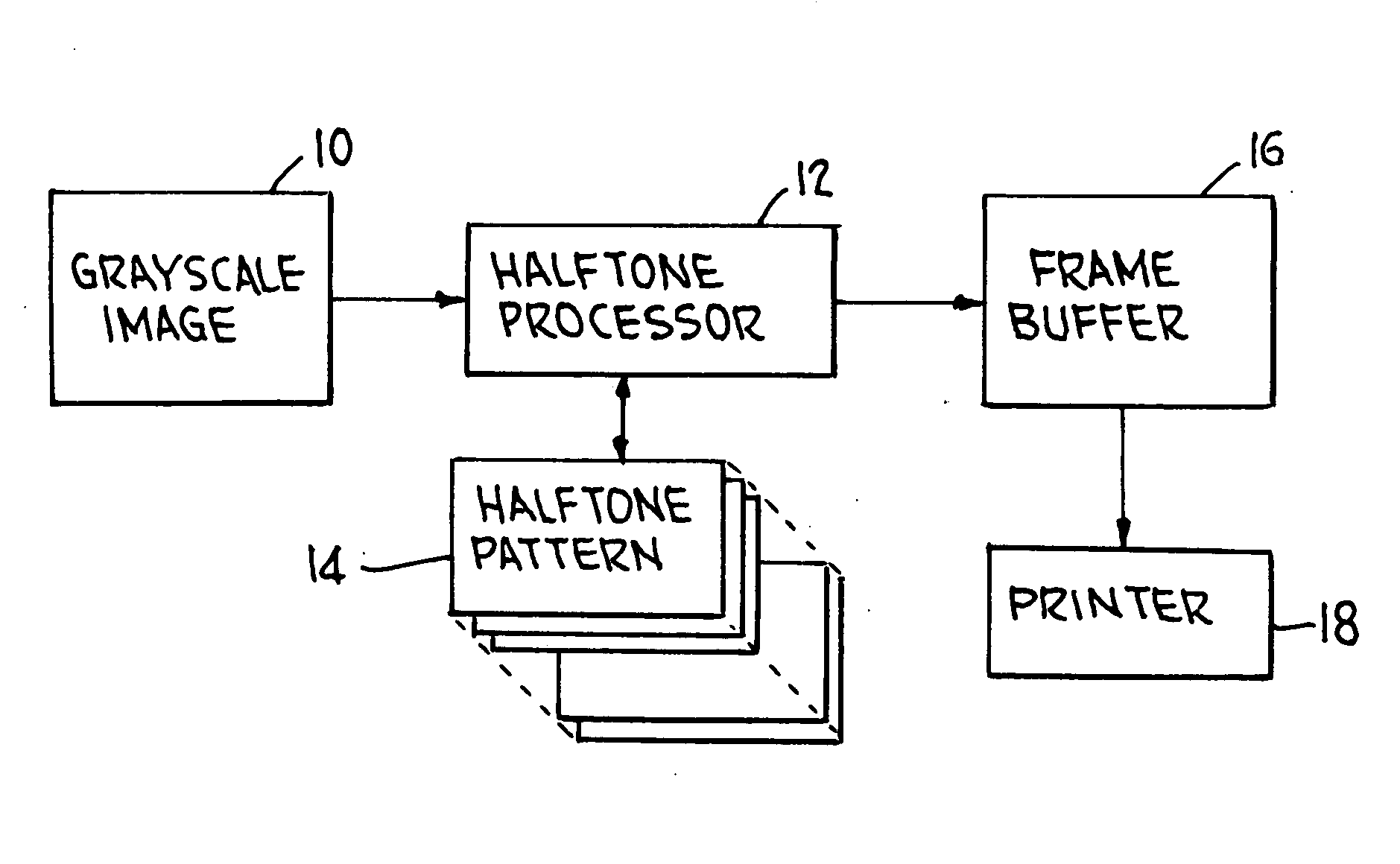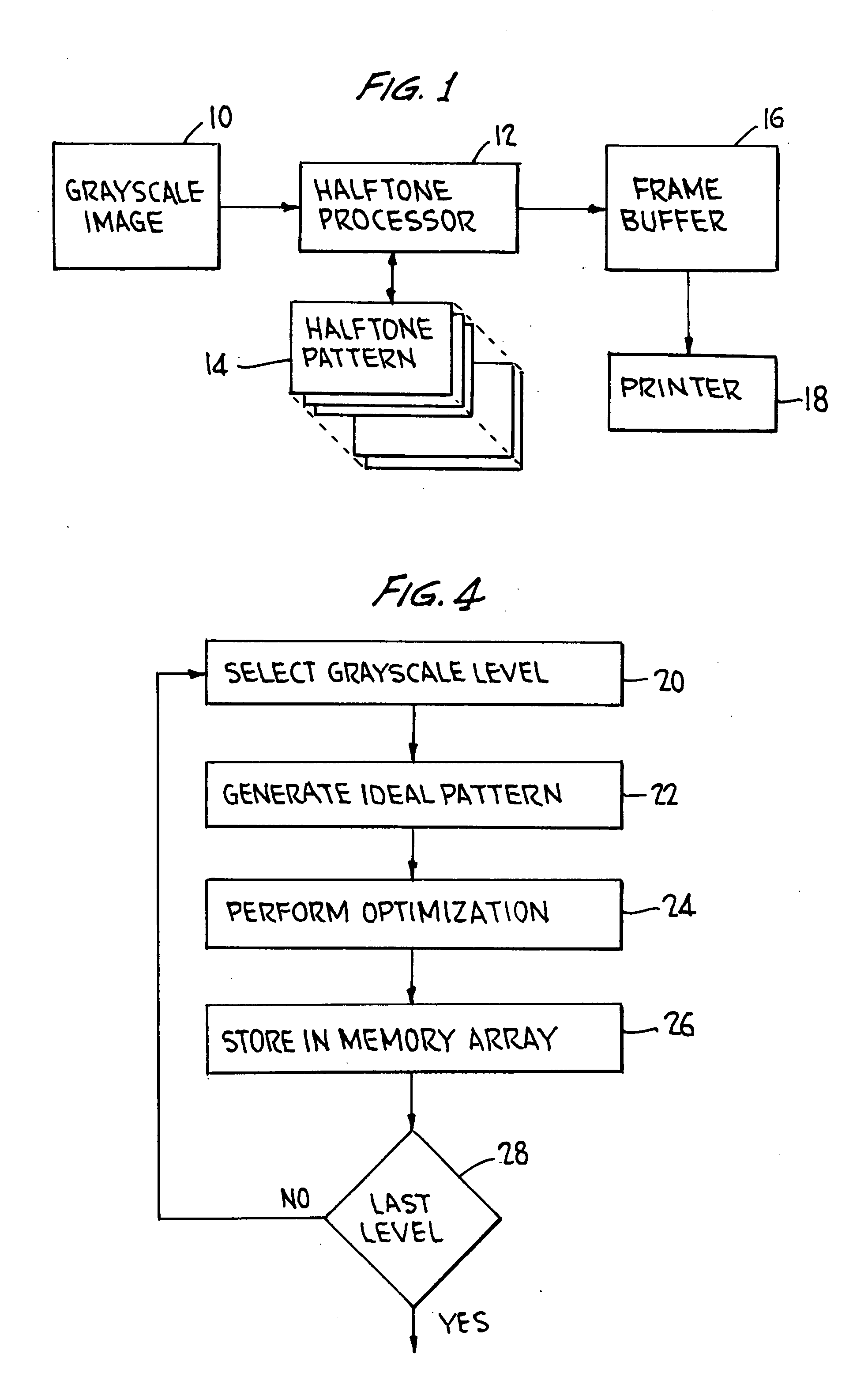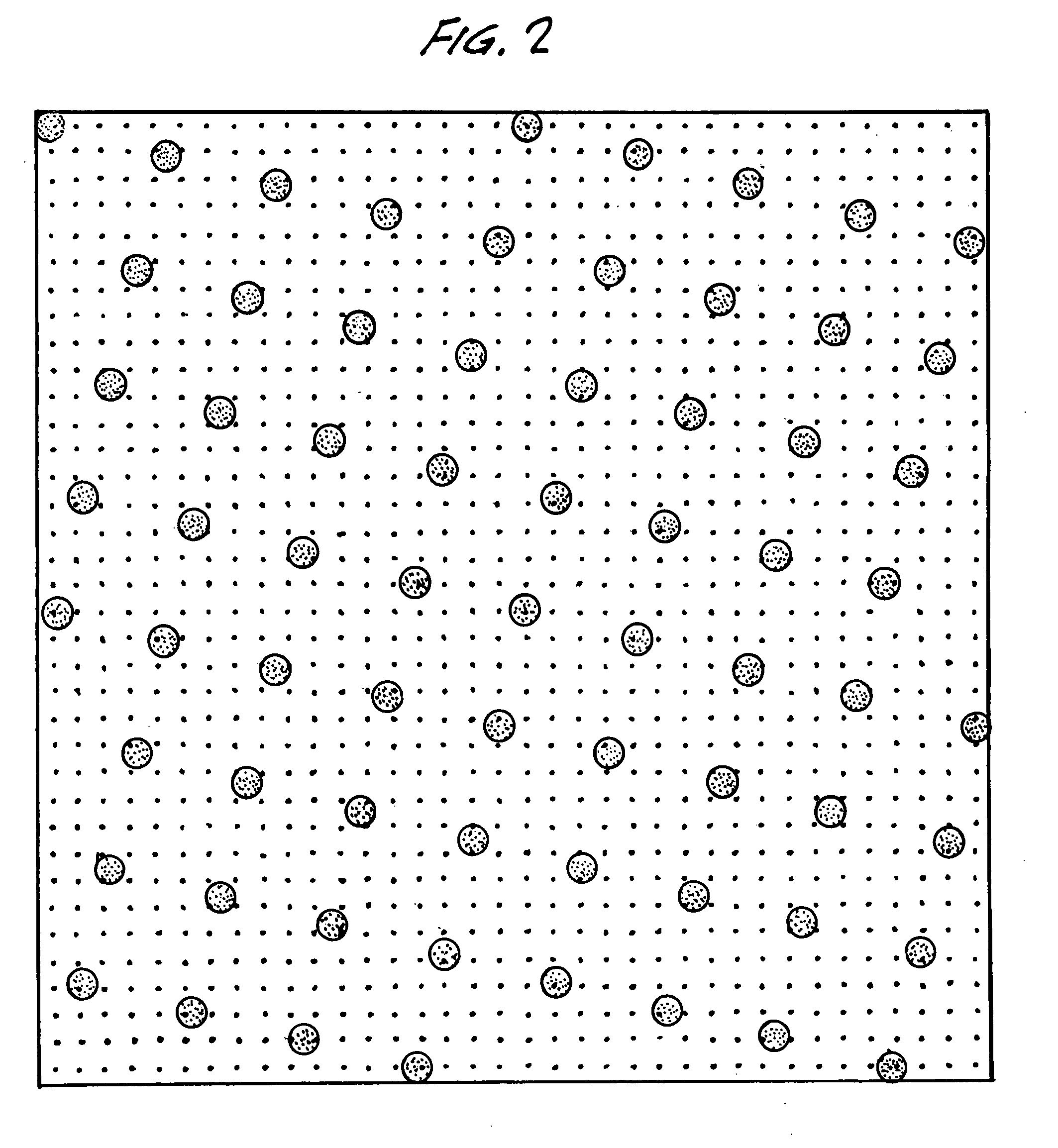Method and system for reducing auto-moire artifacts in periodic halftone screening
a technology of periodic halftone and auto-moire, applied in the field of periodic halftone screening, can solve the problems of moiré-like artifacts appearing in the resulting printed image, affecting the quality of the resulting image, and the limited number of available screen designs, so as to achieve the effect of significantly reducing the auto-moiré
- Summary
- Abstract
- Description
- Claims
- Application Information
AI Technical Summary
Benefits of technology
Problems solved by technology
Method used
Image
Examples
Embodiment Construction
[0015]An exemplary printing system, in which the principles of the present invention can be implemented, is illustrated in FIG. 1. Each pixel of an image 10 to be reproduced is sampled, and the intensity of the sample is provided to a halftone processor 12. The intensity values may be provided from a scanner, if the original image is printed on paper, or directly generated by a computer. In an exemplary system, the intensity values might be 8-bit values, representative of 256 grayscale levels. In response to the receipt of each intensity value, the halftone processor 12 accesses a halftone pattern 14 that corresponds to the received intensity value. Thus, for example, if the range of intensity values covers 256 grayscale levels, i.e. 8-bit intensity values, there will be 256 different halftone screen patterns 14, one for each distinct grayscale level. Each screen pattern indicates whether a mark (or level of a mark) is to be printed at a location corresponding to the pixel in the or...
PUM
 Login to View More
Login to View More Abstract
Description
Claims
Application Information
 Login to View More
Login to View More - R&D
- Intellectual Property
- Life Sciences
- Materials
- Tech Scout
- Unparalleled Data Quality
- Higher Quality Content
- 60% Fewer Hallucinations
Browse by: Latest US Patents, China's latest patents, Technical Efficacy Thesaurus, Application Domain, Technology Topic, Popular Technical Reports.
© 2025 PatSnap. All rights reserved.Legal|Privacy policy|Modern Slavery Act Transparency Statement|Sitemap|About US| Contact US: help@patsnap.com



